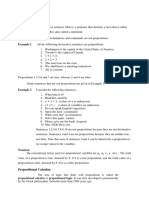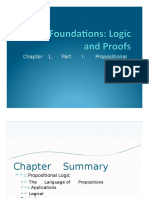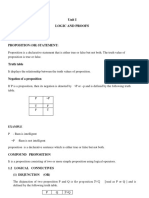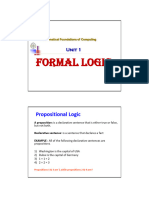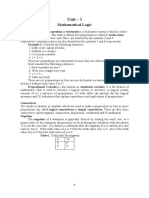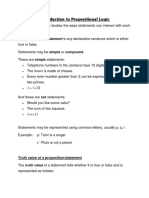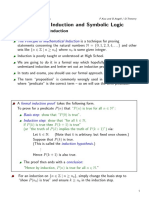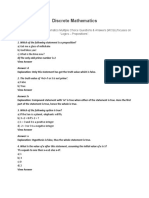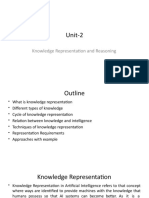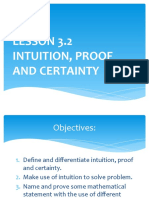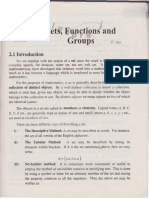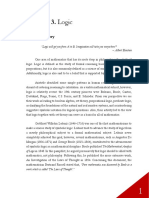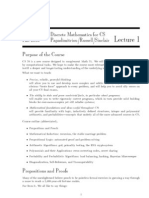0% found this document useful (0 votes)
88 views8 pagesDiscrete Math Logic Essentials
This document contains lecture notes on propositional logic from Dr. Varunkumar Merugu of VIT-AP University in Andhra Pradesh, India. [1] It covers key concepts like statements, truth values, truth tables, logical connectives and their definitions. [2] Conditional statements, biconditionals, and the relationships between a statement, its converse, contrapositive and inverse are explained. [3] Examples of constructing truth tables for compound propositions involving connectives are provided as problems.
Uploaded by
Varunkumar MCopyright
© © All Rights Reserved
We take content rights seriously. If you suspect this is your content, claim it here.
Available Formats
Download as PDF, TXT or read online on Scribd
0% found this document useful (0 votes)
88 views8 pagesDiscrete Math Logic Essentials
This document contains lecture notes on propositional logic from Dr. Varunkumar Merugu of VIT-AP University in Andhra Pradesh, India. [1] It covers key concepts like statements, truth values, truth tables, logical connectives and their definitions. [2] Conditional statements, biconditionals, and the relationships between a statement, its converse, contrapositive and inverse are explained. [3] Examples of constructing truth tables for compound propositions involving connectives are provided as problems.
Uploaded by
Varunkumar MCopyright
© © All Rights Reserved
We take content rights seriously. If you suspect this is your content, claim it here.
Available Formats
Download as PDF, TXT or read online on Scribd
/ 8






